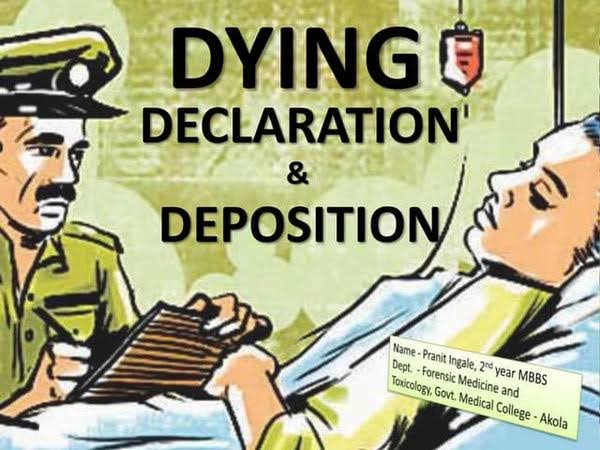S. Ravindra Bhat, J.@mdashThis order will dispose of a petition seeking leave to appeal against the judgment and order of the learned ASJ dated 04.09.2001 in S.C. No. 89/1998. The prosecution allegations in the case are that on 11.02.1998, at about 07.10 PM, information regarding murder of a woman was received at Police Post Pitam Pura, resulting in police officials visiting the spot, where they discovered the dead body of Smt. Kamala Sharma (hereafter called "the deceased") lying in a pool of blood in the drawing room. The deceased''s husband, Sh. Som Prakash Sharma recorded his statement on the basis of which a First Information Report (FIR) was registered. It was alleged by Sh. Som Prakash Sharma that he resided with the deceased, his son, Anil Sharma, and the latter''s wife, Smt. Vijaya Sharma (who was examined as PW-14). It was further stated that on 11.02.1998, at about 10.30 -10.45 AM, Sh. Som Prakash Sharma had gone to Parliament Street in connection with his pension and when he returned around 02.45 pm, the Respondent, Sri Kant (who was related, being the husband of sister of PW-14) met him near the stairs and went inside the house. It was alleged that at 03.30 PM, as was his routine, he left the house to stroll in the park, leaving behind the Respondent and his wife. It was alleged that at 06.30 PM, a boy named Sidharath, who used to reside near his flat, informed him that some incident had occurred in his house and gave a scooter-ride back to his house. On reaching there, he found the deceased lying in a pool of blood; his neighbours as well as his son and others were present.
2. After recording the FIR, the police authorities proceeded to investigate, photographed the crime scene, lifted the chance prints from the spot as well as the blood samples. The body was sent for post-mortem examination to the Civil Hospital Mortuary. The Respondent accused was arrested and charged with having committed the murder. He pleaded not guilty and claimed trial.
3. The Trial Court, after considering the entire conspectus of facts and the materials placed before it, concluded that the prosecution did not prove its case against the Respondent beyond reasonable doubt. The main grounds for the Trial Court''s conclusions for its findings were that:
(i) PW-14, the deceased''s daughter-in-law did not mention or depose about the Respondent''s presence in the house. There were some contradictions between what was deposed in the Court and what she stated during the investigation;
(ii) One Inderjeet (PW-20), a colleague and friend of Anil Sharma had joined investigation. He allegedly witnessed the arrest of the Respondent, and recovery of articles, made pursuant to his disclosure statement. Further, he could not say if police had any information regarding the Respondent when they started searching for him from Anil Sharma''s house;
(iii) The recovery of ornaments said to have been made by the police was suspect and was, therefore, not believed;
(iv) All the circumstances leading to guilt of the accused Respondent had not been proved conclusively; nor were the entire chain of events proved beyond reasonable doubt.
4. It is urged by the learned APP that the Trial Court misread the evidence and did not attach weight to the testimony of Anil Sharma, PW-2. It was urged that the statement of his wife, PW-14, about hearing the Respondent/accused''s wife on phone, was disbelieved - a circumstance which was erroneous.
5. Learned Counsel urged that the PW-20, Inderjeet was supposed to reach duties at 01.30 PM whereas the recoveries were effected around 3.00 PM. The Trial Court, submitted the APP, attached undue weight to the time because the defence witnesses - whose testimony was relied upon by it also gave an approximation of the time but could not be certain about it.
6. We have carefully considered the submissions as well as the record in this case. Before proceeding to analyse the Trial Court judgment, it would be essential to extract the relevant findings of the Court in this regard:
XXXX
24. Smt. Vijay Sharma, the daughter-in-law of the deceased was examined as PW-14 and in the examination in chief, she has not stated anything regarding the presence of the accused in the house, but in the cross examination, she has stated that she used to telephone her mother-in-law from her office and on that day also she telephoned her and the call was answered by someone and she recognized the voice of Sri Kant and she had disclosed this fact to her father-in-law, that she had heard the voice of Sri Kant and she had also informed the police that she was sure that her mother-in-law was murdered by the accused as he was present in their house. She was confronted with her Statement Ex. PW-15/DA, where there is no such mention. Even in her examination in chief, she has nowhere deposed that she had made a telephonic call to her mother-in-law or that the call was answered by the accused and that she had identified his voice. She has thus definitely made improvements in her statement and this part of her statement, that she had made a telephone call to her mother-in-law and that the call was answered by the accused and she had identified his voice, cannot be believed and relied upon. She has further stated in the cross examination, that she had informed the police that the accused was of bad character and drug-edict, but there is no such mention in her statement. Ex. PW-15/DA, recorded by the police and as such no reliance can be placed on the testimony of this witness.
XXXX
26. The testimony of Shri Som Prakash that the accused was taken by him to his house and he was till in the house, when he had left for strolling also remains un-corroborated and the presence of the accused at the relevant time in the house of the deceased has not been proved beyond any reasonable doubt, particularly when, no reliance can be placed in this regard on the testimony of Smt. Vijay Sharma, as discussed above.
XXXX
7. Speaking about the recovery allegedly made from the Respondent, the Court held as follows:
XXXX
28. This contention too has been refuted by the ld. defence counsel and it is contended that at the time of the alleged arrest of the accused, no independent witness was joined and the participation of Inderjeet, who is a friend and colleague of the son of the deceased, is also doubtful and no such ornaments were ever recovered from the possession of the accused. This contention of the ld. defence counsel is also not without merits.
29. A perusal of the record reveals that neither the husband of the deceased Shri Som Prakash, nor her son Shri Anil Kumar had joined the investigation and instead Inderjeet, who is colleague and friend of Shri Anil Kumar was required to join the investigation. Shri Inderjeet is the senior welder in a department of I.P. Station and as per the statement of DW-1, his working hours were from 9 AM to 5.30 PM. This witness has deposed that on 17.2.98, on the instructions of his friend Anil Sharma, he joined the police, who was searching for the accused and he along with police party reached near Delhi Public Library, where the accused was spotted and he was apprehended. On search a packet containing two gold bangles, a gold chain with locket was recovered and these were sealed with the seal of MS and were seized vide memo Ex. PW-20/A. He added that accused was arrested and during investigation, he made a disclosure statement Ex. PW-20/B. In the cross examination, this witness could not say, whether the police was having any information regarding the accused and admitted that when they started for searching the accused from the house of Anil Sharma, he, his father and wife were present there. He also stated that at the time when the accused was apprehended, the public persons had gathered there. He could not give the specific design or description of the jewellery and stated that the jewellery was seized at the spot, but he signed the papers at Police Station at about 2.30 PM. He also stated that his statement was recorded at Police Station, but could not say, whether the accused was interrogated by the police or not and whether the accused had made any statement to the police. He admitted that he remained at the Police Station till 3 PM.
30. Similarly, SI Ved Prakash, examined as PW-21 and Inspector Manohar Singh, the IO of the case, examined as PW-24 have admitted that at the time of the arrest of the accused and the recovery of the ornaments from his possession, many persons from the public had collected there but no one was asked to assist the police and the IO has also admitted that he did not call any officials from the Library for this purpose.
XXXX
8. The Trial Court noticed that several independent witnesses were available at the relevant time when the accused is alleged to have been arrested, and the ornaments recovered; however, the IO did not make any effort to join any of them in the investigation. Furthermore, it was noticed that the witness - to the recovery remained in the police station till 03.00 pm. A comparison with the defence evidence, particularly, the testimonies of DW-1 and 2 with that of Inderjeet (PW-20), the Court held that the scrutiny of the independent testimony of the said witnesses by the superior officers revealed that he had taken leave only for half a day whereas the recovery is alleged to have been made later. The Trial Court noticed that chance fingerprints lifted from the spot and sent for comparison and report did not match with the specimen finger and palm impressions of the Respondent/accused.
9. It has been repeatedly held by the Supreme Court that while considering applications for grant of leave to appeal, the High Court has to be satisfied that there are substantial and compelling reasons which warrant a second-look against an order of acquittal. Such reasons may include serious and grave misapplication of law, overlooking material evidence or adopting an approach which has resulted in miscarriage of justice. In the present case, the impugned judgment is well-reasoned. The Trial Court deduced correctly that being a case based on circumstantial evidence, the prosecution had to establish all the pieces that went to conclusively establish the Respondent''s guilt and rule-out every hypothesis of his innocence. However, the evidence and materials presented before the Court did not measure-up to that standard. We agree with the reasoning of the Trial Court and do not find any merit in the petition. Accordingly, the same is dismissed.

